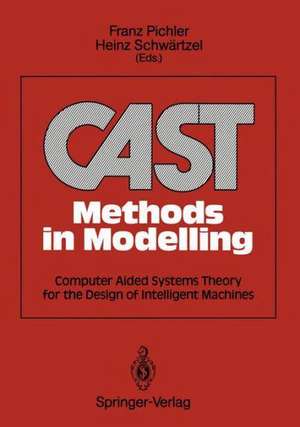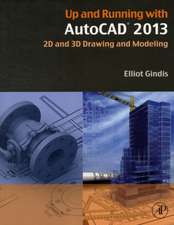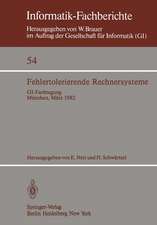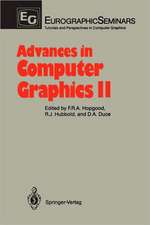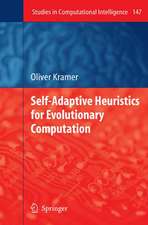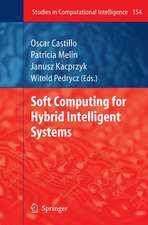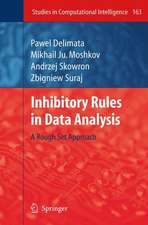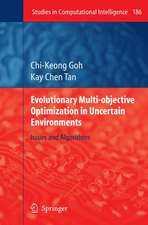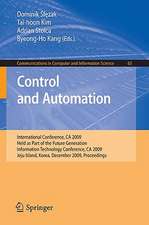CAST Methods in Modelling: Computer Aided Systems Theory for the Design of Intelligent Machines
Autor Franz Pichler, Heinz Schwärtzelen Limba Engleză Paperback – 12 feb 2012
Preț: 652.87 lei
Preț vechi: 816.09 lei
-20% Nou
Puncte Express: 979
Preț estimativ în valută:
124.97€ • 135.79$ • 105.04£
124.97€ • 135.79$ • 105.04£
Carte tipărită la comandă
Livrare economică 21 aprilie-05 mai
Preluare comenzi: 021 569.72.76
Specificații
ISBN-13: 9783642956829
ISBN-10: 3642956823
Pagini: 392
Ilustrații: XIV, 376 p.
Dimensiuni: 170 x 242 x 21 mm
Greutate: 0.62 kg
Ediția:Softcover reprint of the original 1st ed. 1992
Editura: Springer Berlin, Heidelberg
Colecția Springer
Locul publicării:Berlin, Heidelberg, Germany
ISBN-10: 3642956823
Pagini: 392
Ilustrații: XIV, 376 p.
Dimensiuni: 170 x 242 x 21 mm
Greutate: 0.62 kg
Ediția:Softcover reprint of the original 1st ed. 1992
Editura: Springer Berlin, Heidelberg
Colecția Springer
Locul publicării:Berlin, Heidelberg, Germany
Public țintă
ResearchCuprins
1 Introduction.- 1.1 Problem-Solving by Models.- 1.2 Systems Theory Instrumented Modelling.- 1.3 CAST — Computer Aided Systems Theory.- 1.4 CAST Methods in Modelling: An Overview.- References — Chapter 1.- 2 Cast Method Bank Systems.- 2.1 CAST Method Bank System Design.- 2.2 CAST.FSM — Finite State Machine Method Bank System.- 2.3 CAST.FOURIER — Method Bank for Generalized Spectral Techniques.- 2.4 CAST.LISAS — Simulation Tool for Regular Networks of Finite State Machines.- 2.5 CAST.PN — An Editor and Simulation Tool for Petri Nets.- 2.6 CAST Applications.- References — Chapter 2.- 3 Modelling and Simulation.- 3.1 Introduction.- 3.2 System Specification Formalisms.- 3.3 Abstract Simulator Concepts.- 3.4 Implementations of Modelling and Simulation Environments.- 3.5 Multifacetted Modelling.- 3.6 Towards Variable Structure Modelling and Simulation.- References — Chapter 3.- 4 Machine Vision.- 4.1 Introduction.- 4.2 CAST and Machine Vision.- 4.3 Modelling Objects for Visual Recognition.- 4.4 Spontaneous Recognition of Structured Objects.- 4.5 An Integrated Development Tool for Machine Vision.- References — Chapter 4.- 5 Implementation Issues.- 5.1 Software Development for CAST.- 5.2 Building Class Hierarchies.- 5.3 Browsers for CAST Tools.- 5.4 Implementing Data Persistency in LISP.- 5.5 Direct Embedding of Procedural Code in LISP.- References — Chapter 5.- Appendix: CAST.FSM User’s Guide.- A.1 CAST.FSM Background.- A.2 System Requirements.- A.2.1 Hardware.- A.2.2 Software.- A.3 CAST.FSM Installation.- A.4 Starting a CAST Session and Browsing.- A.4.1 The CAST Class Browser.- A.4.2 The CAST Instance Browser.- A.4.3 Defining a System.- A.4.4 Petri Nets Make the Difference.- A.5 Table Editing.- A.6 Analysis Operations.- A.6.1 I/O-Experiment.- A.6.2Lattice.- A.6.3 Others.- A.7 Synthesis, System Transformations and the Realization Tree.- A.8 Living with a Prototype: Errors and Breaks.- A.8.1 Beginners and casual CAST.FSM Users.- A.8.2 Power Users.- A.9 Saving Realizations on Files.- References — Appendix.
